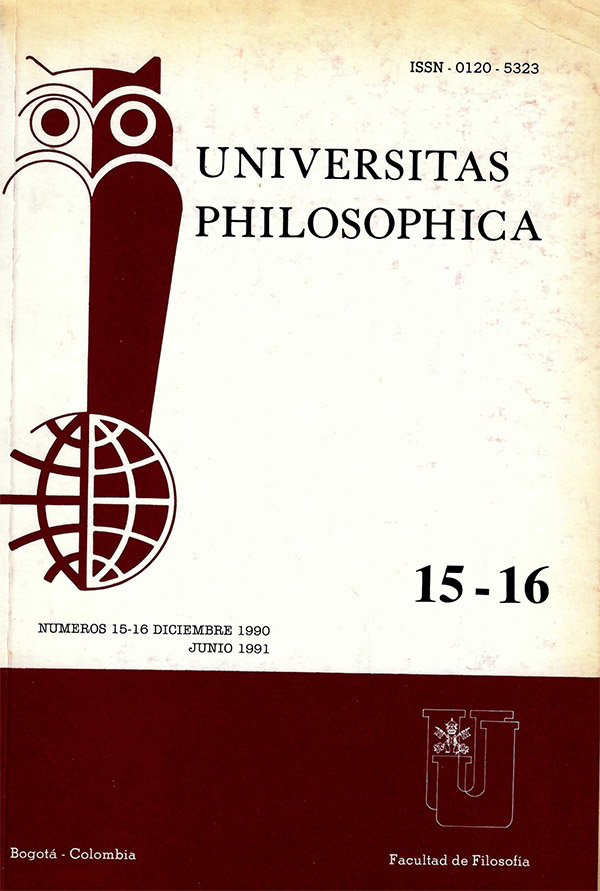Abstract
Este artículo pretende mostrar que en el Ensayo sobre el entendimiento humano, Locke asume la hipótesis mecánico corpuscular –sostenida particularmente por Boyle y, en general, expuesta por la ciencia del siglo XVII–, para fundamentar su teoría en torno a los límites entre la certeza y la probabilidad.
El corpuscularismo asumido por Locke es un constructo hipotético que atribuye a los corpúsculos esas partículas de materia, activas, de las que dependen las operaciones mecánicas de los cuerpos-comportamientos semejantes a los de los cuerpos perceptibles. Pero, puesto que no se tiene una certeza de las variadas formas como operan los corpúsculos, somos incapaces de poseer un conocimiento cierto de los cuerpos que nos rodean. A este respecto sólo se puede conjeturar por analogía con los cuerpos perceptibles.
This journal is registered under a Creative Commons Attribution 4.0 International Public License. Thus, this work may be reproduced, distributed, and publicly shared in digital format, as long as the names of the authors and Pontificia Universidad Javeriana are acknowledged. Others are allowed to quote, adapt, transform, auto-archive, republish, and create based on this material, for any purpose (even commercial ones), provided the authorship is duly acknowledged, a link to the original work is provided, and it is specified if changes have been made. Pontificia Universidad Javeriana does not hold the rights of published works and the authors are solely responsible for the contents of their works; they keep the moral, intellectual, privacy, and publicity rights.
Approving the intervention of the work (review, copy-editing, translation, layout) and the following outreach, are granted through an use license and not through an assignment of rights. This means the journal and Pontificia Universidad Javeriana cannot be held responsible for any ethical malpractice by the authors. As a consequence of the protection granted by the use license, the journal is not required to publish recantations or modify information already published, unless the errata stems from the editorial management process. Publishing contents in this journal does not generate royalties for contributors.


